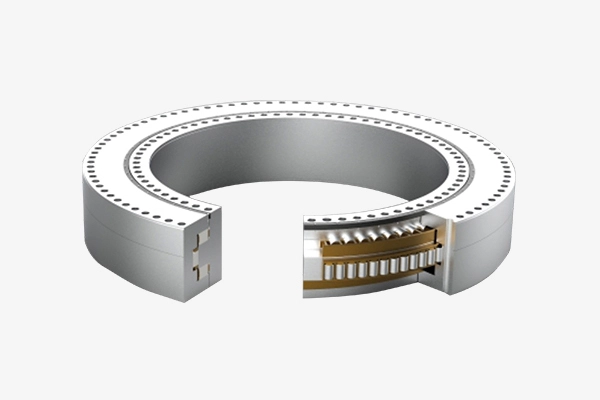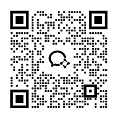How Do You Maintain Triple Row Roller Slewing Bearings?
Triple row roller slewing bearings are critical components in heavy machinery and equipment, particularly in applications requiring precise rotational movement under heavy loads. These sophisticated bearings consist of three rows of rollers arranged between inner and outer rings, providing exceptional stability and load-bearing capacity. Proper maintenance of these bearings is crucial for ensuring optimal performance, extending service life, and preventing costly equipment downtime. This comprehensive guide explores the essential aspects of triple row roller slewing bearing maintenance and addresses common concerns in the industry.

What are the key lubrication requirements for triple row roller slewing bearings?
Proper lubrication is the cornerstone of effective triple row roller slewing bearing maintenance. These complex bearing systems require carefully planned and executed lubrication protocols to ensure optimal performance and longevity. The primary function of lubrication in triple row roller slewing bearings is to create a protective film between rolling elements and raceways, reducing friction and preventing metal-to-metal contact.
The selection of appropriate lubricant is crucial and depends on several factors, including operating conditions, temperature range, and load characteristics. For most applications, lithium-complex greases with EP (Extreme Pressure) additives are recommended, as they provide excellent mechanical stability and protection against wear. The NLGI grade typically ranges from 1 to 2, depending on the specific application requirements.
Lubrication frequency and quantity are equally important considerations. Most manufacturers recommend establishing a regular lubrication schedule based on operating conditions and bearing size. As a general rule, bearings should be relubricated at shorter intervals when operating under harsh conditions, such as exposure to moisture, dust, or extreme temperatures. The correct quantity of lubricant is essential - too little can lead to inadequate protection, while too much can cause increased operating temperatures and energy consumption.

Modern triple row roller slewing bearings are typically equipped with multiple lubrication points, strategically positioned to ensure even distribution of lubricant across all rolling elements. It's crucial to rotate the bearing through several complete revolutions during the lubrication process to ensure uniform coverage. Additionally, implementing a monitoring system to track bearing temperature and vibration levels can help optimize lubrication intervals and detect potential issues before they become serious problems.
How often should triple row roller slewing bearings be inspected for wear and damage?
Regular inspection is vital for maintaining the integrity and performance of triple row roller slewing bearings. A comprehensive inspection program helps identify potential issues early, preventing unexpected failures and costly downtime. The frequency of inspections should be determined based on several factors, including operating conditions, application criticality, and historical performance data.
Visual inspections should be conducted at least monthly, focusing on visible signs of wear, damage, or contamination. This includes checking for unusual noise, vibration, or temperature increases during operation. The bearing's sealing system should be carefully examined for signs of damage or deterioration, as compromised seals can lead to lubricant loss and contamination ingress.
More detailed inspections should be performed quarterly or semi-annually, depending on the application. These comprehensive examinations should include clearance measurements, torque testing, and assessment of raceway conditions. Modern diagnostic tools, such as ultrasonic testing and vibration analysis, can provide valuable insights into the bearing's condition without requiring disassembly.
During inspections, particular attention should be paid to the triple row roller slewing bearing mounting system, including bolts and fasteners. Loose or damaged mounting components can lead to misalignment and accelerated wear. Documentation of inspection findings, including measurements and observations, is crucial for tracking bearing condition over time and predicting maintenance needs.

It's also important to establish baseline measurements during initial installation or after major maintenance activities. These reference points help identify trends and deviations that might indicate developing problems. Regular analysis of collected data can reveal patterns and help optimize maintenance schedules.
What cleaning and contamination prevention methods are most effective for these bearings?
Contamination is one of the primary causes of premature bearing failure, making effective cleaning and contamination prevention essential aspects of maintenance. A comprehensive approach to cleanliness involves both regular cleaning procedures and preventive measures to minimize contamination risks.
The cleaning process should begin with the external surfaces of the bearing assembly, using appropriate cleaning agents that won't damage seals or other components. Special attention should be paid to areas around seals and lubricant ports, where contaminants tend to accumulate. When cleaning is required, it's important to use lint-free materials and avoid aggressive cleaning methods that might damage bearing surfaces.
Preventive measures should include regular seal inspection and maintenance, as well as monitoring the condition of surrounding equipment that might contribute to contamination. Installing appropriate filtration systems and maintaining clean operating environments are crucial steps in preventing contamination. In applications where triple row roller slewing bearings are exposed to harsh environments, additional protective measures such as sealed housings or purge systems may be necessary.
Regular analysis of lubricant samples can provide valuable information about contamination levels and wear patterns. This analysis should include particle counting and identification of contaminant types, helping to identify potential sources of contamination and adjust prevention strategies accordingly. When contamination is detected, it's important to investigate and address the root cause rather than simply cleaning and relubricitating the bearing.
The implementation of proper handling procedures during maintenance activities is also crucial. This includes using clean tools and work areas, protecting bearings from dust and debris during maintenance, and ensuring that replacement parts and lubricants meet cleanliness specifications. Training maintenance personnel in proper cleaning techniques and contamination prevention practices is essential for maintaining bearing reliability.

Luoyang Huigong Bearing Technology Co., Ltd. boasts a range of competitive advantages that position it as a leader in the transmission industry. Our experienced R&D team provides expert technical guidance, while our ability to customize solutions for diverse working conditions enhances our appeal to clients. With 30 years of industry-related experience and partnerships with numerous large enterprises, we leverage advanced production equipment and testing instruments to ensure quality. Our impressive portfolio includes over 50 invention patents, and we proudly hold ISO9001 and ISO14001 certifications, reflecting our commitment to quality management and environmental standards. Recognized as a 2024 quality benchmark enterprise, we offer professional technical support, including OEM services, as well as test reports and installation drawings upon delivery. Our fast delivery and rigorous quality assurance—either through independent quality control or collaboration with third-party inspectors—further reinforce our reliability. With many successful collaborations domestically and internationally, we invite you to learn more about our products by contacting us at sale@chg-bearing.com or calling our hotline at +86-0379-65793878.
References:
1. SKF Bearing Maintenance Handbook (2021). SKF Group Publishing.
2. Timken Engineering Manual: Bearing Maintenance Practices (2023).
3. NSK Technical Report: Slewing Bearing Maintenance Guidelines (2022).
4. Journal of Mechanical Engineering: "Advanced Maintenance Strategies for Heavy-Duty Bearings" (2023).
5. Rothe Erde Technical Documentation: "Slewing Ring Maintenance Best Practices" (2022).
6. International Journal of Industrial Engineering: "Contamination Prevention in Large-Scale Bearings" (2023).
7. Schaeffler Technical Guide: "Lubrication of Large Diameter Bearings" (2021).
8. American Bearing Manufacturers Association: "Bearing Maintenance Standards" (2023).
9. Machinery Lubrication Magazine: "Optimizing Slewing Bearing Performance" (2022).
10. IEEE Transactions on Industrial Applications: "Predictive Maintenance for Slewing Bearings" (2023).

